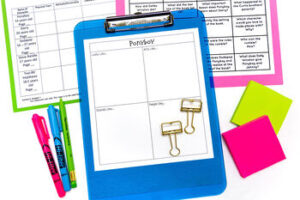Science should be fun, interesting and engaging. Science needs to be more about reading a textbook and watching a Bill Nye movie. Science needs to involve as much hands-on learning as possible. Unfortunately, many teachers are thrown into the position of teaching science classes with little background knowledge, time to correctly incorporate the curriculum or funds to run it correctly.
Students love science, but because many states focus on testing scores for math, reading, and writing, science tends to be thrown in quickly and without much thought. This line of thinking needs to change. Reading, writing and math skills can be incorporated into science lessons. Furthermore, through hands-on experiments, students are continually working on the higher-level thinking skills that will carry them into other subject areas.
I started a series showing other teachers’ simple budget-friendly experiments they can bring into the classroom that will engage students while tying into their curriculum. Providing your students with these experiences will spark their love of science again.





